|
|
A History of Korean Gaming
|
FE (Future Entertainment) /
FEW (Future Entertainment World 퓨처엔터테인먼트월드)
|

|
|
Founded:
|
November 1995
|
|
Status:
|
taken over by HiCom/eSofnet (May 2000)
|
|
Key People:
|
정봉수 Jeong Bongsu:
President
|
|
Website:
|
none
|
|
Profile:
|
|
Just like Sonnori and YeonWoo Soft, FE was also founded by former Softry developers who were dissatisfied with the working conditions there. While some of their games, especially the Yahwa series, were rather popular among critics and gamers, the company was almost infamous for cranking out game after game in record time—18 games in roughly 3 years speak a clear message.
In 1997 FE teamed up with publisher Ungjin Media, which stayed their constant partners for over a year1. The company had another cooperation with the Japanese development team Baroque, whose action RPG Midgard was localized by FEW, which was the revised company name by then2.
In late 1999 Wise HiCom and FEW announced that they'd be working together under a new brand called SofTop3. Their first combined project was the MMORPG Dragon Raja, which FEW was working on since 19984. However, soon after the foundation of eSofnet as the successor to HiCom in December 1999, FEW was assimilated by them as a whole (May 2000)5.
|
|
|
將軍 (장군 / Janggun) - PC-DOS (May 1996)
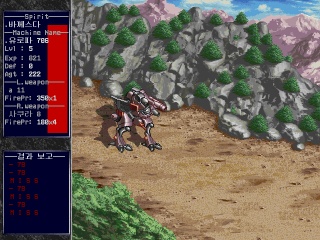
Janggun
|

Janggun
|
|
Robots that carry the names of historic Korean generals are the heroes of this SRPG, so it doesn't surprise that the title of the game translates to generals. The enemies—of course—have Japanese names. Although the units are designed like mechas, they are not presented as manned but rather having a life on their own.
The game starts in simulation mode, where robots can be modified and ressources invested into new body parts for them. After a rather lengthy briefing the actuall mission starts, which takes the form of a rather dull and boring tactical battle. Somehow this part of the game doesn't transport the feeling one has much control over the outcome of the battle, but maybe the mechanics just very complicated.
The overview map screen looks very functional without any unnecessary embellishment, but the robots in their attack animations attest competent pixel art craft. Too bad that it should remain rarely employed, as for most of their future games, FEW shifted to cheap prerendered graphics.
|

Janggun
|
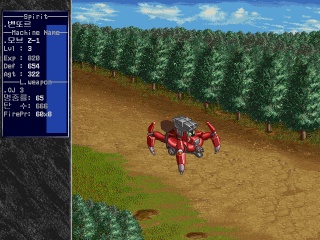
Janggun
|
|
|
|
夜話 (야화 / Yahwa) - PC-DOS, Windows (October 1996)
|
|
天上小魔英雄傳 (천상소마영웅전 / Cheonsang Soma Yeongung-jeon) - PC-DOS, Windows (November 1996)
|
|
파이터~타클라마하칸 사막편 (Fighter: Taklamakan Samak-pyeon) - PC-DOS (January 1997)
|
|
Tokyo 夜話 (토쿄야화 / Tokyo Yahwa) - Windows (September 1997)
|
|
덩키 (Dunky) - Windows (1997)
|
|
부킹맨~맨앤우먼 (Booking Man: Man & Woman) - Windows (October 1997)
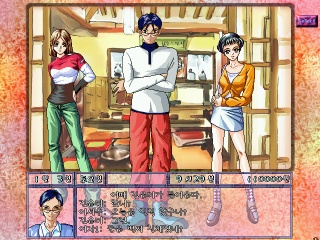
Booking Man: Man & Woman
|
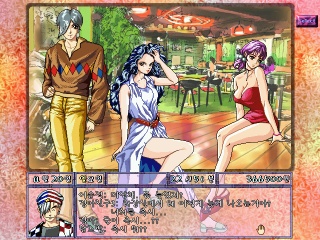
Booking Man: Man & Woman
|

Booking Man: Man & Woman
|
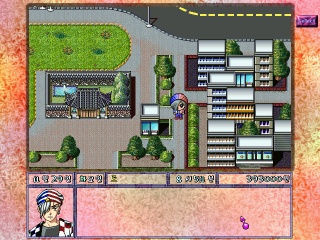
Booking Man: Man & Woman
|
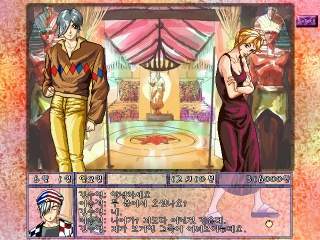
Booking Man: Man & Woman
|
|
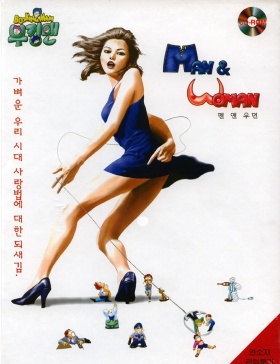
Cover
Man & Woman is the revealing title of this game where everything revolves around the interaction with the other sex. Gameplay switches between two parts. A "life simulation" one where the protagonist of choice has to hone his skills and get various jobs, all of which of course is meant as a preparation for the dating, which takes the form of a visual novel. Actually, this part feels rather disconnected from the rest, as the developed stats don't seem to have much influence here, other from the obvious obstacles that are posed by exhaustion and a lack of money, both of which make it impossible to do anything at all. An exhausted character can't even take the subway home, so he has to wait for the bus, as little sense as that makes.
Every once in a while the player is faced with a decision, like when there's two possible women to hook up with at a given time, but those occasions are rare and usually the only choice is to either show up to a date or don't. The latter effectively ends the romance and is much easier to pull off, as this game is huge. There are eight big areas with a ton of shops, cafes and bars, sometimes a vague knowledge of Seoul's topography is required to find a meeting place (the town is not an exact replica, but sometimes it's necessary to associate a town district with the right subway stop and such). If not following the dialogue closely, it's easy to miss the next appointment, especially since the text engine is a bit glitchy and sometimes just skips the last line in a dialogue, which typically tends to hold the most important information.
There's tons and tons of text, pushing the language barrier up to a maximum. Over the course of four game years, it's possible to meet more than 20 possible dating partners. There's four guys to chose from in the beginning, but they're all the same character, and he's not very likeable. Considering the premise of the game is to change women like others change their closes, that's probably a given, though.
As for the sex scenes, the game is quite daring for a Korean game, although the game has no content that would warrant an 18-and-up rating in most European countries. The game has the habit of presenting a convenient way for the protagonist to drop out of the relationship and blame the woman, making him free for the next target. Otherwise the writing actually isn't that bad most of the time, and there's really, really much of it too keep one occupied, if only one wasn't forced to play a total dick. (But then again, it would be hardly justifiable otherwise to have the protagonists change girlfriends on a monthly basis.)

Advertisement
|

Booking Man: Man & Woman
|

Booking Man: Man & Woman
|
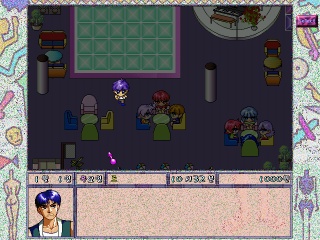
Booking Man: Man & Woman
|

Booking Man: Man & Woman
|
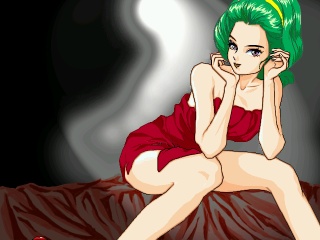
Booking Man: Man & Woman
|
|
|
|
北命 (북명 / Bungmyeong) - Windows (November 1997)
|
|
天上小魔英雄傳 II (천상소마영웅전 II / Cheonsang Soma Yeongung-jeon II) - PC-DOS (December 1997)
|
|
블러디 아리아 (Bloody Aria) - Windows (December 1997)
|
References
1. Game Com 6/1997, page 34
2. PC Champ 4/1998, page 134
3. PC Champ 10/1998, page 149
4. PC Power Zine 2/2000, page 194
5. eSofnet company history
6. PC Champ 11/1996, page263
|
A History of Korean Gaming
|
|
|